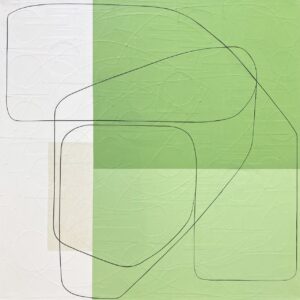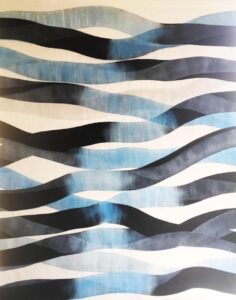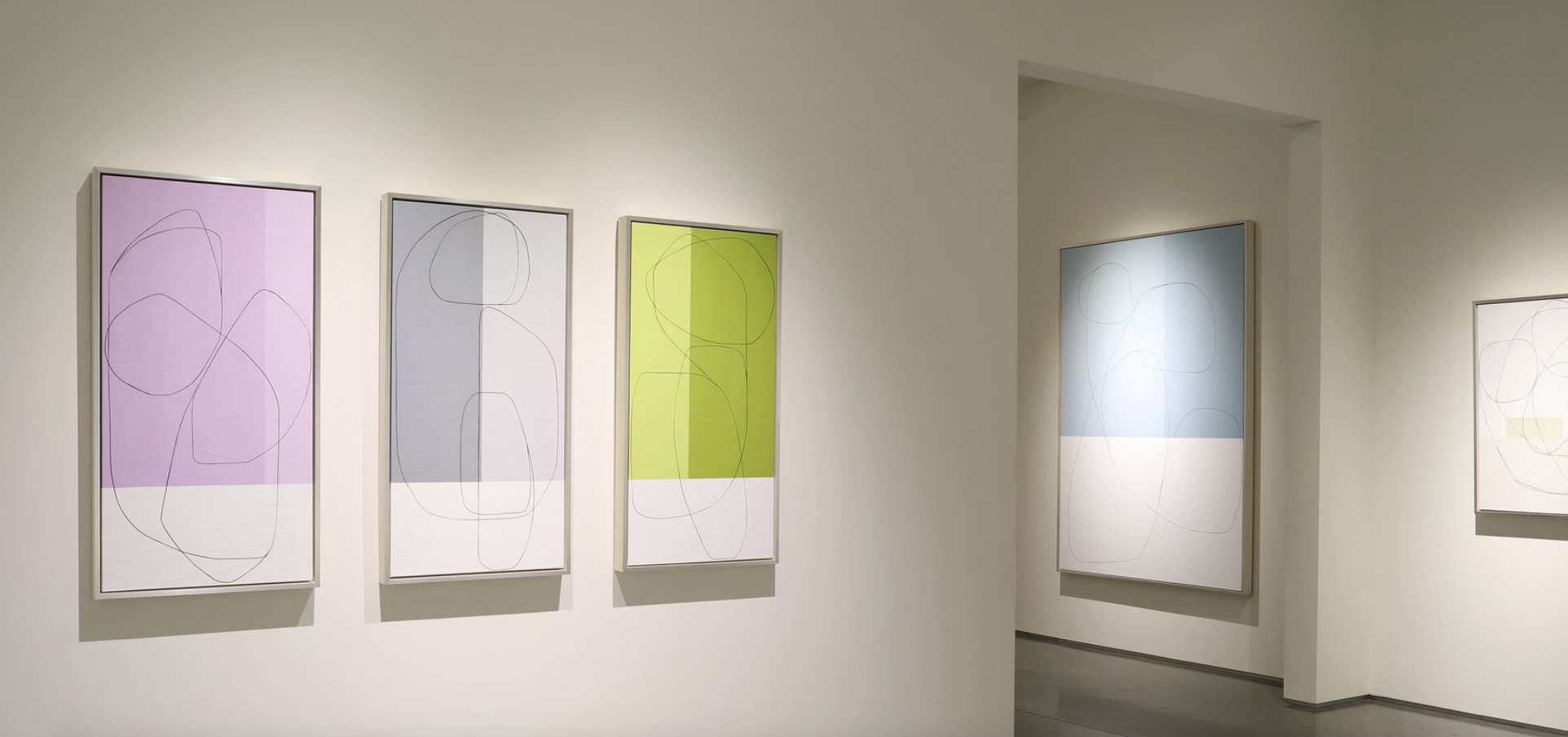How abstract art became an exercise in experience
Throughout art history, the word “abstract,” at times, has been associated with elitism—at least to those of us outside the inner world of art dealers and avant-garde style icons. But in this age of social media, where we gain near limitless exposure to a variety of art and décor from artists and designers all over the world, the presence of less traditional creations has become much more ubiquitous. Thus, abstract art, and especially art that emphasizes peaceful, flowing curves, has become a go-to trend in interior design, and for more than just aesthetic reasons.

Acrylic and Paper Collage on Canvas, 24 x 24 in.
“I think we’re definitely seeing a trend with abstract art in boutique hospitality, especially,” says Chelsea Norris, co-director of Ann Connelly Fine Art. “The game has also evolved into experience-driven art collecting, meaning that artists are creating more than decoration—they’re creating an experience for the viewer.”
For example, one of the artists Norris works with at the gallery, Maura Segal, uses her art to explore the theme of how humans navigate the spaces we fill. Through her collages and paintings, she represents the geometry of our cities and towns, and emphasizes the fluidity of our movement through them with a loose line, creating soft shapes.
“Prior to hearing that from her, I’m not sure I would have gained that insight just from looking at it,” says Norris, “but now I can appreciate the process.”

Social media has granted us an unprecedented look into that behind-the-scenes process, which Norris says is probably partly responsible for abstract art’s continued popularity through the years. Still, she warns about the importance of keeping your personal aesthetic in mind when hunting for a piece of your own, instead of just copying what the big names are showing you online.
“When we’re all looking at Architectural Digest and Elle Decor and all these really beautiful publications, we often see these high-contemporary spaces that are usually accompanied by high-contemporary abstract art,” says Norris. “We crave that because it works in that context. But when you’re trying to build it yourself, it can become really challenging to find meaning in some of those abstracted pieces without really having that time to study it. That’s why I feel like you have to have that connection, and it’s the gallery’s purpose to help people get there.”
To learn more about Ann Connelly Fine Art and the abstract works on display in the gallery, visit annconnelly.com.












